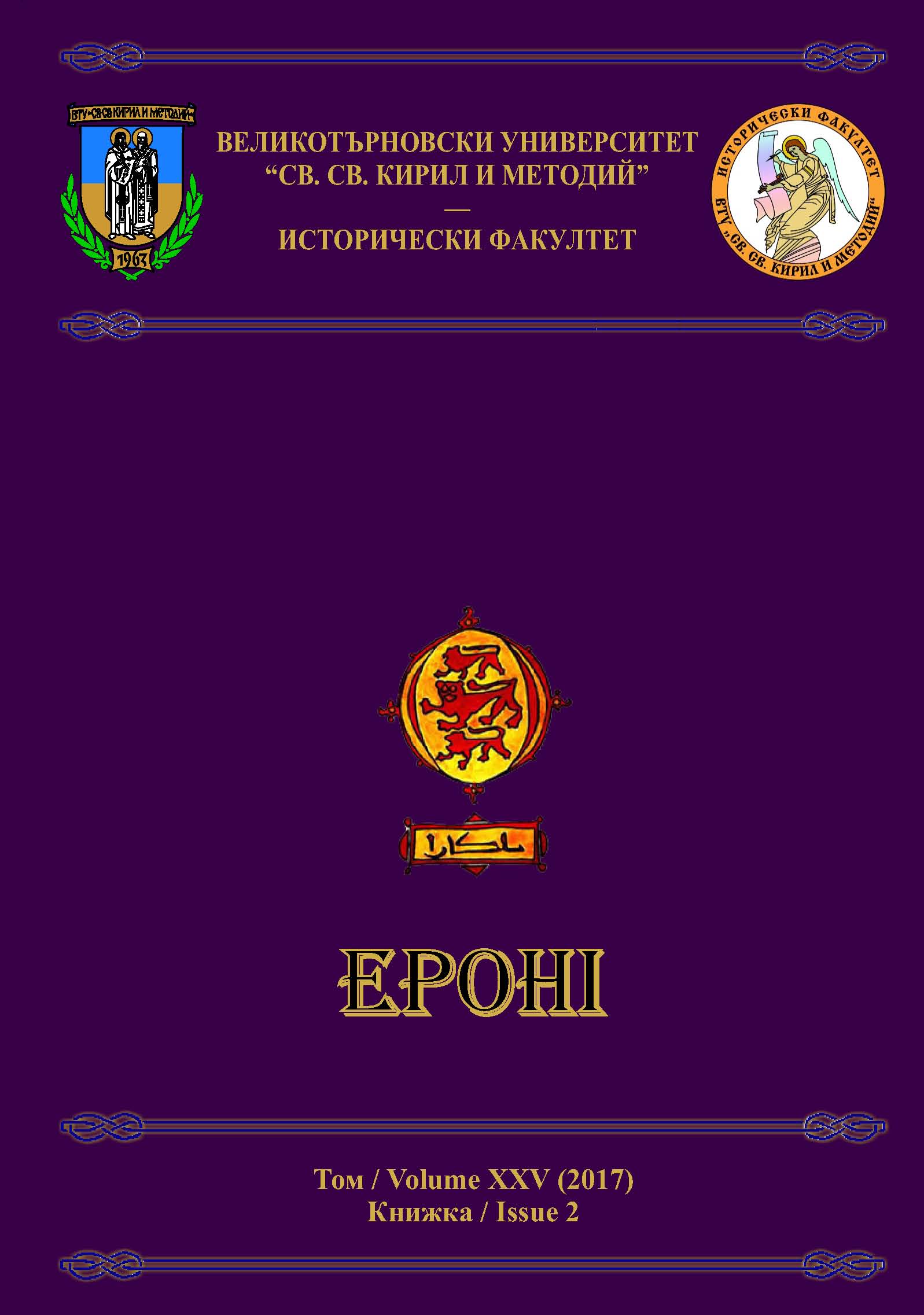Какво цели кан Крум с подновяването на договора от 716 година?
What was Krum after with Renewal of the Treaty of 716?
Author(s): Nikolay HrisimovSubject(s): History, Diplomatic history, Political history, Middle Ages, 6th to 12th Centuries
Published by: Великотърновски университет „Св. св. Кирил и Методий”
Keywords: Bulgar-Byzantine relations; treaties; clauses; the treaty of 812 in Aachen, kaisar; Theophanes the Confessor
Summary/Abstract: Among the often commented episodes of our Early Middle Ages is the Bulgarian-Byzantine treaty, signed in 716. However it has not been noticed yet, that it does not appear in any other source, except for Theophanes the Confessor in 812 as a reference to a past event. The analyze of the situation leads to the conclusion, that in this case it refers to something that was not spoken of or was intentionally omitted in the narrative. The reasons for this were the clauses, included in the treaty, which led to a great “disgrace for the Romans”. This shame is explicitly revealed by the second clause in the convention, which provides for giving red hides (symbol of imperial power and prerogative only of the emperor and his family) as a state tribute. Another moment of Krum’s rule, which has not been commented, is why exactly he wanted to have the treaty of 716 renewed in the summer of 812. Analyzing the sense of the briefly mentioned clauses in the context of the events which took place earlier in the same year, we could possibly find the reason for the demand of renewal of this treaty, instead of singing another Bulgarian-Byzantine pact. In April 812 the Byzantine Empire officially recognized the imperial title of Charlemagne. Probably the news of this reached Bulgaria and lead to the continuation of the war. Once Develt was captured, Krum sent messengers in Constantinople, demanding that the treaty be renewed according to that of 716. If not, he was ready to take Messembria. We know the content of the convention through Theophanes’ testimony. The first clause regulated the boundaries between the rivalry states. With the second one Krum wanted to be acknowledged as a kaisar or be given another adequate imperial title. The third and the fourth clauses were probably added by Krum himself. The third one aimed to eliminate eventual contenders of Krum for the Bulgarian throne, while the fourth one, in the form of a trading agreement, might as well served as an undisputed way of proving the equal position of the two states. Khan Krum did not manage to get the title he wanted, but this was achieved by his heir to the throne Omurtag. The Bulgarian aspirations for Constantinople also remained. Making use of his predecessor’s victories, not much time later he was granted the title -------------- by the Byzantines, alongwiththe prerogative of wearing all imperial insignia, with which Omurtag is shown on his so called medallions. This title, unlike that of the kaisar, was hereditary and was to be worn by all Bulgarian rulers until the imperial coronation of Symeon in 913.
Journal: Епохи
- Issue Year: XXV/2017
- Issue No: 2
- Page Range: 420-431
- Page Count: 12
- Language: Bulgarian

